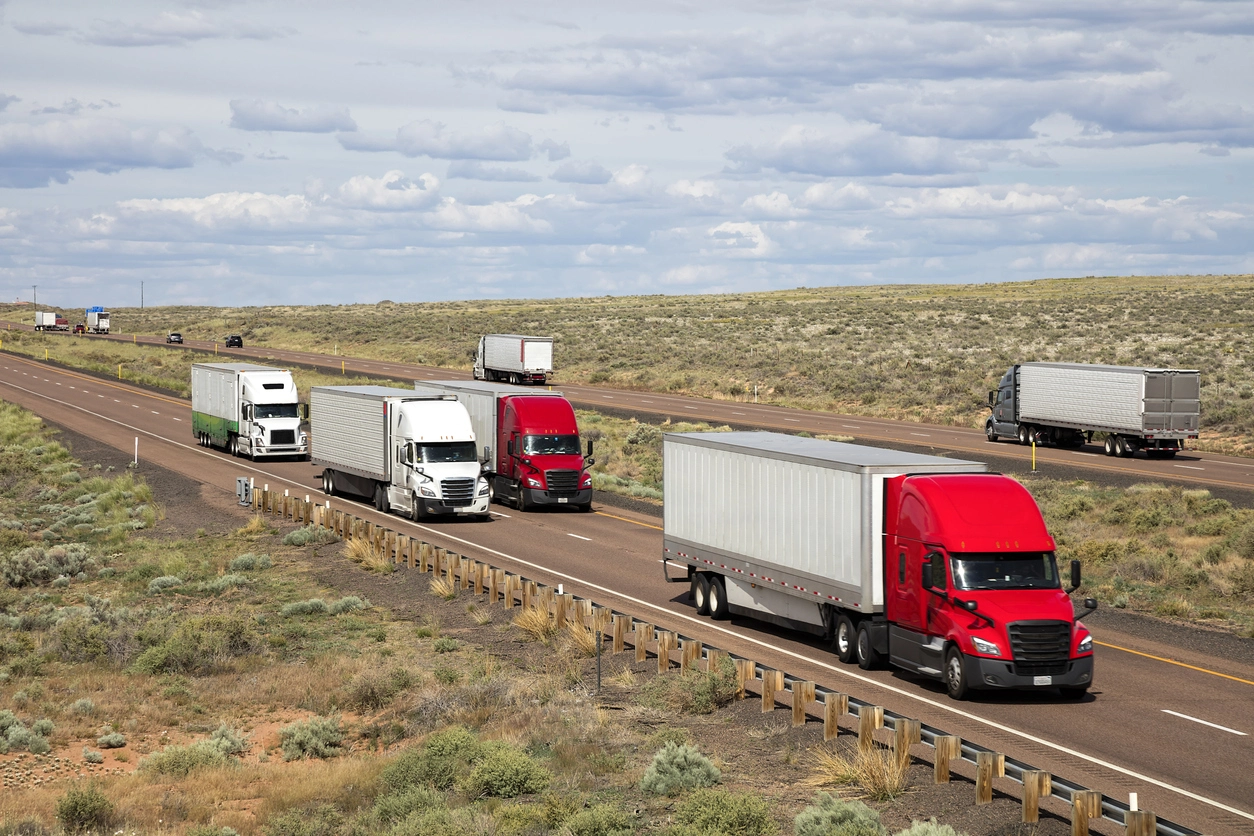Application Form
Please fill out the form below, so we can contact you as soon as possible!

As the world evolves, so do the challenges and opportunities within the logistics and trucking industries. Businesses must keep pace with these changes to remain competitive. Today, we will look at the key trends shaping U.S. logistics and trucking.
The integration of digital technologies is revolutionizing logistics operations. Sophisticated tech greatly smoothes out all the supply chain processes and makes the lives of everyone involved easier.
AI-powered tools transform operations by optimizing delivery routes, predicting vehicle maintenance needs, and improving demand forecasting. For instance, machine learning algorithms analyze traffic patterns to find the most efficient delivery routes, reducing fuel consumption and delays.
From robotized sorting systems to autonomous forklifts, automation is streamlining warehousing operations. These advancements reduce human error, improve accuracy, and enable 24/7 operations.
IoT-enabled devices, such as GPS trackers and temperature sensors, offer real-time shipment visibility. Fleet managers can monitor vehicle health, cargo conditions, and delivery timelines, improving service quality and customer satisfaction.
Sustainability has become a priority for the trucking industry, driven by environmental concerns and regulatory mandates.
Electric and hydrogen-powered trucks are gaining traction as companies aim to reduce their carbon footprint. For example, Tesla’s electric semi-trucks and hydrogen-powered vehicles by Nikola are setting new benchmarks for sustainability.
Federal and state governments are introducing stricter emission standards and providing incentives for adopting clean energy technologies.
Many logistics firms are committing to carbon-neutral supply chains, using renewable energy and offset programs to reduce their environmental impact.
The e-commerce boom has dramatically impacted logistics and trucking operations. With clients wanting faster and more personalized delivery, transportation businesses must change to meet their demands.
The demand for faster and more efficient last-mile delivery has surged. Logistics companies are deploying smaller delivery vehicles and using urban micro-fulfillment centers to meet this need.
E-commerce has created a fluctuating freight landscape, with peak periods like holidays requiring quick scalability. Companies must balance operational efficiency with cost-effectiveness.
Third-party logistics providers (3PLs) play a crucial role in helping businesses meet e-commerce demands. They offer specialized services, such as same-day delivery and real-time tracking.
The trucking industry faces significant workforce issues that require urgent attention.
The American Trucking Association (ATA) estimates a shortage of over 80,000 drivers. Factors such as an aging workforce, demanding schedules, and licensing barriers contribute to this gap.
Companies are improving pay, offering better benefits, and investing in driver well-being initiatives to attract and retain talent.
With the rise of autonomous systems and digital platforms, training programs now emphasize technological skills for drivers and logistics personnel.
Recent disruptions, from the COVID-19 pandemic to natural disasters, have underscored the need for resilient supply chains.
Many companies are rethinking their supply chains, focusing on regional sourcing and manufacturing to reduce dependency on global networks.
Businesses are building inventory buffers and diversifying suppliers to mitigate the risk of shortages during crises.
Cross-border trade, especially with Canada, continues to grow in importance for the U.S. trucking industry.
The trucking industry is integral to the $600 billion trade relationship between the two nations.
Digital customs platforms streamline border processing, reducing delays and improving efficiency for freight operators.
The United States-Mexico-Canada Agreement (USMCA) has opened new opportunities and challenges, requiring companies to adapt to updated regulations and standards.
The U.S. logistics and trucking industry is going through a period of rapid transformation. Digital growth, sustainability improvements, and workforce changes reshape how goods are moved across the country. Businesses that embrace these trends will be well-positioned to thrive in a competitive and dynamic landscape.
To remain competitive, companies must stay informed, adopt innovative technologies, and invest in sustainable practices. By doing so, they can meet evolving customer demands while ensuring long-term success in a challenging yet promising industry.
Application Form
Please fill out the form below, so we can contact you as soon as possible!